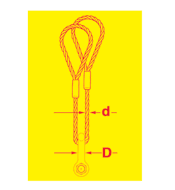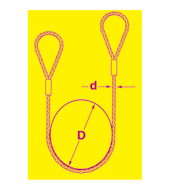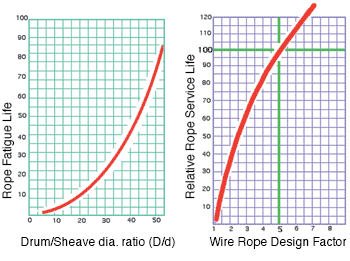 The tables show relative expected rope service life in relationship to D/d ratios and Design Factors. |
Relative Service LifeThe ability of wire rope to withstand repeated bending work over sheaves and onto drums is also called the ‘fatigue resistance’. This terms does NOT describe the ability to withstand mechanical damages nor the crush resistance of the rope. The fatigue resistance of a rope is not time but cycle dependent. Bending fatigue is the ability to withstand repeated bending over sheaves and drums and such ability is depending on factors such as drum diameter, groove dimensions, rope tension, line speed, rope construction, fluctuation between highest and lowest loads, etc. For further information on this topic, please contact us for technical assistance and advice. |
|
|
|
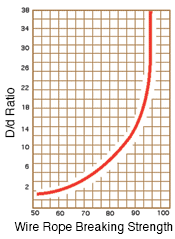
|
Loss of Strength over Sheaves and PinsRope breaking strength is determined in a standard test wherein fittings are attached to the ends of the rope and the rope is pulled in a straight line. If however, the rope passes over a curved surface (such as a sheave or pin) its strength is decreased. The amount of such reduction will depend on the severity of the bend as expressed by the D/d ratio. For example, a rope bent around a pin of its own diameter will have only 50% of the strength attributed to it in the standard test. This is called ‘50% efficiency’. Even at D/d ratios of 40, there may be a loss of up to 5%. At smaller D/d ratios, the loss in strength increases quite rapidly. The angle of bend needs not to be 180°, 90°, or even 45°; relatively small bends can cause considerable loss. The table shown derived from standard test data as published by the ‘Wire Rope Technical Board’, is based on static loads only, and is a weighted average of 458 tests over pins and thimbles on 6×19 and 6×37 class ropes. |
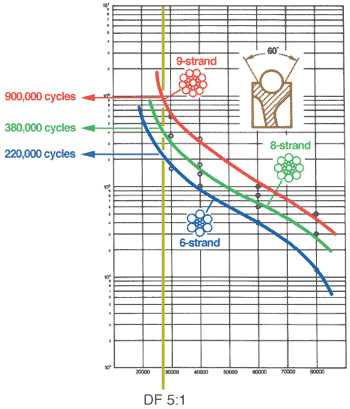
|
Why multi-strand Wire Rope?The number of outer strands determine the contact area between the rope and the sheave groove. If this area is increased the points of contact are multiplied and contact pressures are reduced. At the same time lateral notching stresses between strands and wires are reduced, resulting in increased fatigue life. Extensive tests programs at the University of Stuttgart, Germany, have proven conclusively that the bending fatigue life of wire rope improves with an increasing number of outer strands. Based on that research we have developed Python® High Performance Wire Rope with 8-, 9-, and 10 outer strands. |
|




